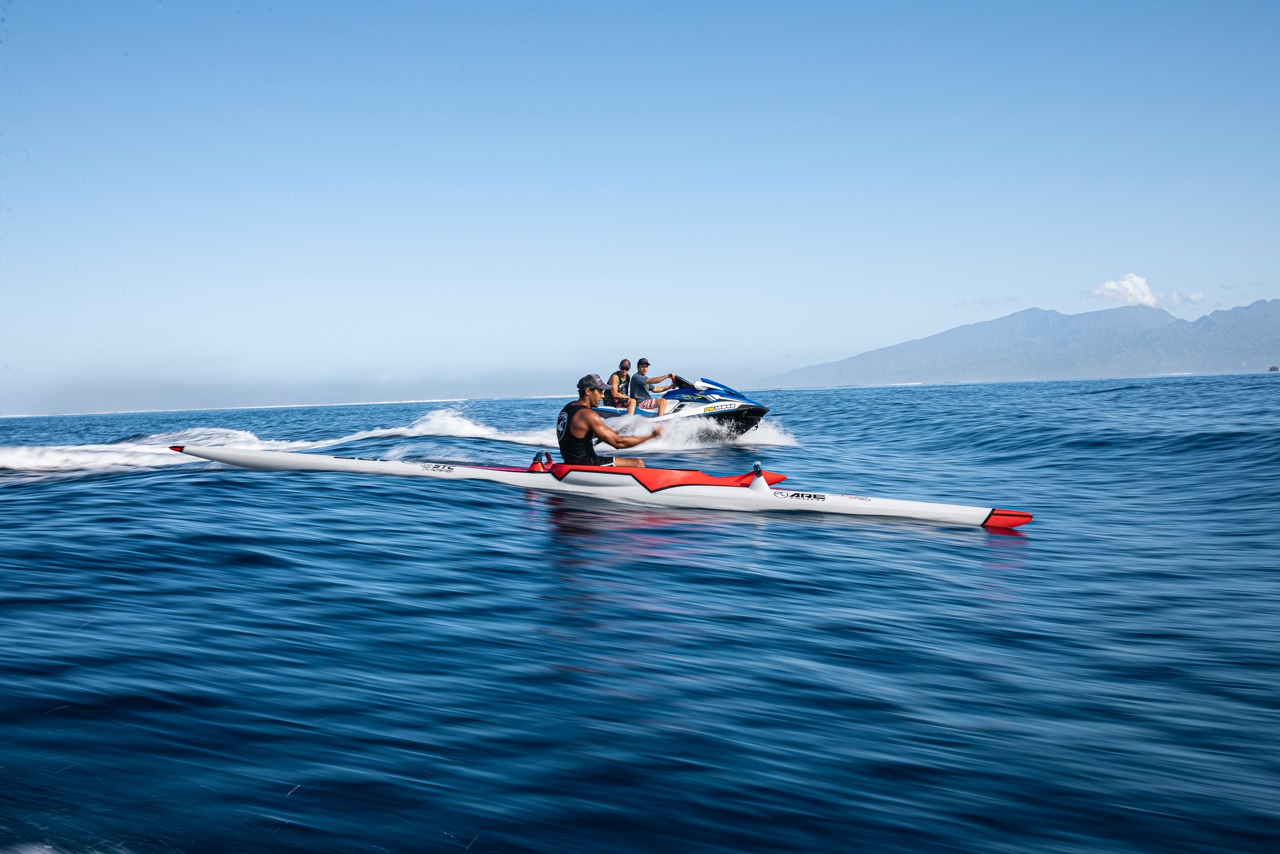
Cobra International says that it has shipped its first batch of 36 composite canoes to ARE Tahiti.
Cobra International says that it has been able to mass produce a new composite canoe for outrigger canoe brand ARE Tahiti.
The new OC-1 canoe, called Mana, features a closed deck on which the paddler sits on top of the hull and is available in two models; a hybrid version weighing 12kg, using an 80:20 mix of E-glass and carbon fiber reinforcement fabrics, and the PRO full carbon version that can weigh as little as 9 kg.
Cobra says that a master model formed the basis of the mass production tooling, with two sets of composite hull tooling taken from the master plug, allowing a build rate of up to 50 OC-1 canoes per month.
The company used its PVC foam sandwich windsurf board construction and vacuum consolidated epoxy wet layup for the mix of woven and stitched biaxial reinforcements. The top and bottom sections of the hull were molded separately then bonded together, with the smaller outrigger hull – known as the ‘ama’ – produced in the same way. Prepreg carbon fiber and in-house split mold tooling was also used for the two ‘Iakos’ - the two cross beams that join the ama to the main hull, the company said. An in-mold applied finish coat was then used for the hybrid OC-1 while the PRO carbon fiber model was coated with Cobra’s ultra-light paint system.
This story uses material from Cobra, with editorial changes made by Materials Today. The views expressed in this article do not necessarily represent those of Elsevier.





